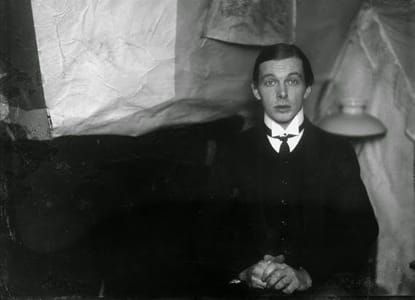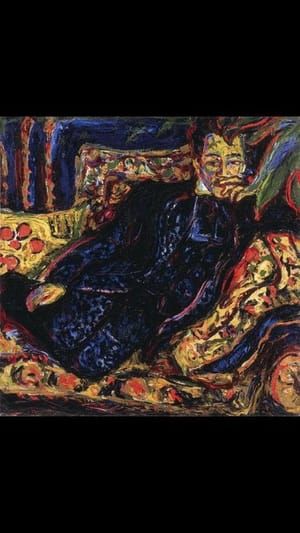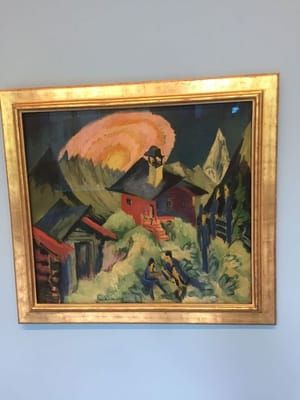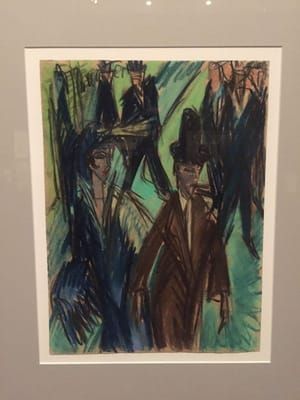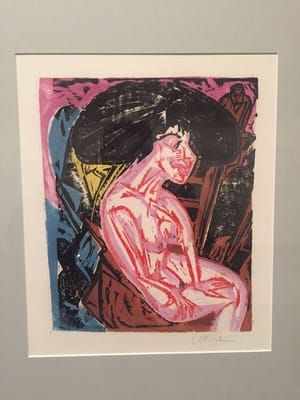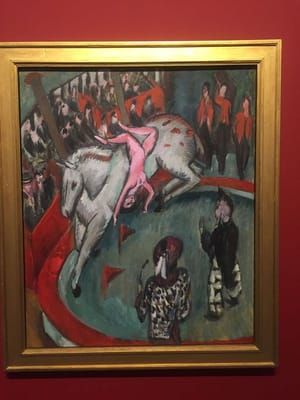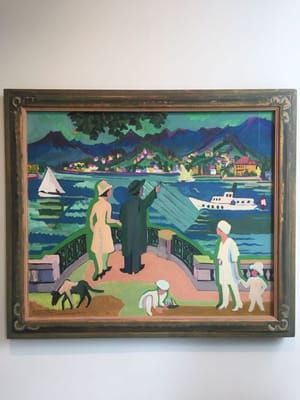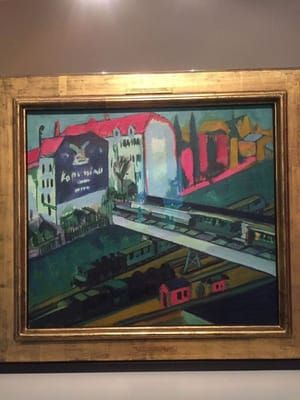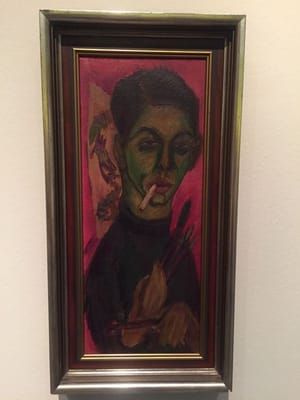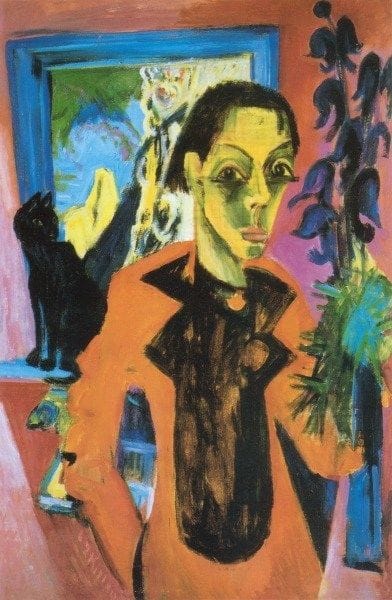

Self Portrait, 1920
Ernst Ludwig Kirchner
Ernst Ludwig Kirchner (1880-1938) was born in Aschaffenburg, Bavaria. When he was 21 years old he began studying architecture at the Königliche Technische Hochschule in Dresden where he completed his degree in 1905. He and Fritz Bleyl, whom he met while studying, founded the group called Die Brücke (The Bridge) which would greatly influence 20th century art by creating the Expressionist movement. In 1913, the group was disbanded and Kirchner started to make a name for himself. His first exhibition of paintings took place in the same year in the US, where his art was quite popular, and American museums started to acquire his works in 1921.
In 1914, Kirchner volunteered to fight in WWI, and suffered from a nervous breakdown and entered a sanatorium as a morphine addict. After taking some time to recuperate, in 1919, Kirchner started painting cats, in particular, his own black cat, Bobby. Kirchner painted over one hundred pictures of his cat and even mentioned him in his diary. He wrote, “Bobby, the little cat is here now…..Clean and alive, quite interesting company. Hopefully, I can keep the little man. “ In his 1920 self portrait, we see Bobby perched on a window sill on his right side. The cat sits there as if he were Kirchner’s alter ego or perhaps a guardian. But Bobby was definitely a typical cat in that he needed his independence as we learn from a letter to Kirchner wrote to his wife in 1928, “I feel better now, the cough is almost gone……Bobby is mostly outdoors, only comes home to eat and is very friendly. I am very lonely.” When Bobby died on October 6th, 1930, his death affected Kirchner deeply. Kirchner wrote, “We buried him in tears. Even though an animal, he suffered and died like a man. His clear eyes will remain in our memories for a long time.”
In 1931, one of Kirchner’s outdoor cats, Schacky, started to visit Kirchner in his studio. Kirchner wrote his wife, “I am quite often alone, only Schacky plays around me while I try some etchings. Yesterday evening Schacky had a lady visitor and there was much shouting and raving.” But Schacky, too, was an independent tomcat and was not a consistent companion to Kirchner. With the rise of German nationalism and the Nazi party, Kirchner’s work was soon deemed “degenerate” and over 600 of his works were destroyed by the party in 1937. Unable to endure this, he committed suicide in 1938.
[http://www.thegreatcat.org/the-cat-in-art-and-photos-2/cats-in-art-20th-century/ernst-ludwig-kirchner-1880-1938-german/]
Uploaded on Apr 2, 2018 by Suzan Hamer
Ernst Ludwig Kirchner
artistArthur
Wait what?
